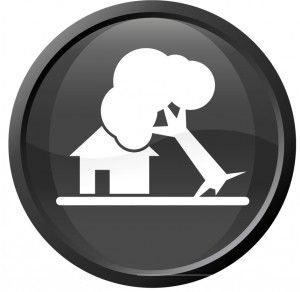By: P. Andersen, 8/27/14
Last week, we covered the steps you should take before house hunting. That is the logical course, and one that will make your life easier. It is not the only course, however, as circumstances are constantly changing. Me? I found a place that met needs I didn’t really know I had, and did the rest of that stuff after the fact – which is to say, there are no hard and fast rules. Preparation is always preferable to reaction, though…
As for finding a house, there are so many ways and places to look, it would be crazy to mention all of them. Local realtors are always a great option if you know where you want to buy. For a broader view, I recommend Zillow, a site that aggregates all the listings in a region, and allows you to enter criteria to search. This was what happened with me – a year after looking, an email from Zillow came in with a great little house in my budget, in the town I wanted to be in. From there, I contacted a realtor I talked to the previous year, he suggested a mortgage broker he liked, they both suggested a lawyer that was reasonable, and we were off to the races.
With your new-found understanding of all the fees, taxes and down payments (having read Part 1), you will be in a great position to make this process go smoothly. I made some mistakes, and though it didn’t derail things, it did make my life more stressful. Learn from me, and get the facts up front…
Once you have the place you want, it is time for the negotiations. For simple sales, you can use the same broker as the seller, but there is something comforting in having someone that only has your interest at heart. When it comes to requests to the seller for changes you want made, it is nice knowing that you have someone in your corner making those requests. Same with the negotiation on price – you can be completely honest with someone that is working for you, and let them do their job. “Offer $XXX,XXX, but I would be willing to go to $XXX,YYY if it comes down to it” is something you can tell your realtor, but you don’t want to share with the seller…
The negotiations are a dance that can be stressful for you, and for the seller too. Remember, the seller has needs too. They have to have a place to move to, they need a certain sale amount to have it make sense, they have a mortgage to pay off and they have their own fees associated with the sale. Add to those things the fact that there are other buyers that may be bidding on the house or apartment? You could get lucky, as I did, or you can have house after house not work out for you, as many others do. Me? The house I saw is the house I bid on, is the house that I am buying (fingers crossed for a few more steps in the process). It isn’t always that easy!
Once you DO have an offer accepted, there are more steps before a contract is signed. Now is when you have the home inspected (PLEASE LET THE ROOF BE GOOD, PLEASE NO TERMITES, PLEASE NO WATER IN THE BASEMENT!!!). Find a good inspector to go over the place top to bottom, from roof to basement. The inspector will make notes on things that should be changed, and these will be listed as concessions from the seller – things they will do prior to closing. These things will wind up in the contract, making those updates binding.
Quick question: is the basement finished, does it have a bathroom, or a laundry room? Any additions? Is there a new deck? Any real upgrades to the property would require a permit from the city – if they were done without a permit, you may be buying a home with a potential fine and back taxes owed. Your lawyer can assist in this, just be sure to make a note of any renovations that have taken place to ensure that those renovations were done by the book.
Whew, are you tired YET??? Well, at least we have made it to signing the contracts. This contract will have all the stipulations in it that you requested and were agreed to, along with selling price and other key pieces of information. This is THE step – the point of no return. Once you sign this form, and the seller signs and returns it to your lawyer? You are on the hook to buy the house. To not do so is to forfeit the large deposit you sent with the contract for escrow. Essentially, the contract states that if all goes well with the appraisal, the title search, the repairs, and the mortgage, you must buy the house or forfeit the money you put in escrow (perhaps ¾ of the total down payment).
So, you signed the contract in 22 places? You had your lawyer send it, along with your large check, to the seller’s lawyer? The seller signed the contract in 22 places, and returned it to your lawyer? Boom, you are in contract. Congratulations, part 2 is complete. You have a framework for buying a house, and in part 3, next month, we will discuss getting from Contract to Closing. Oh, the fun is just beginning!






